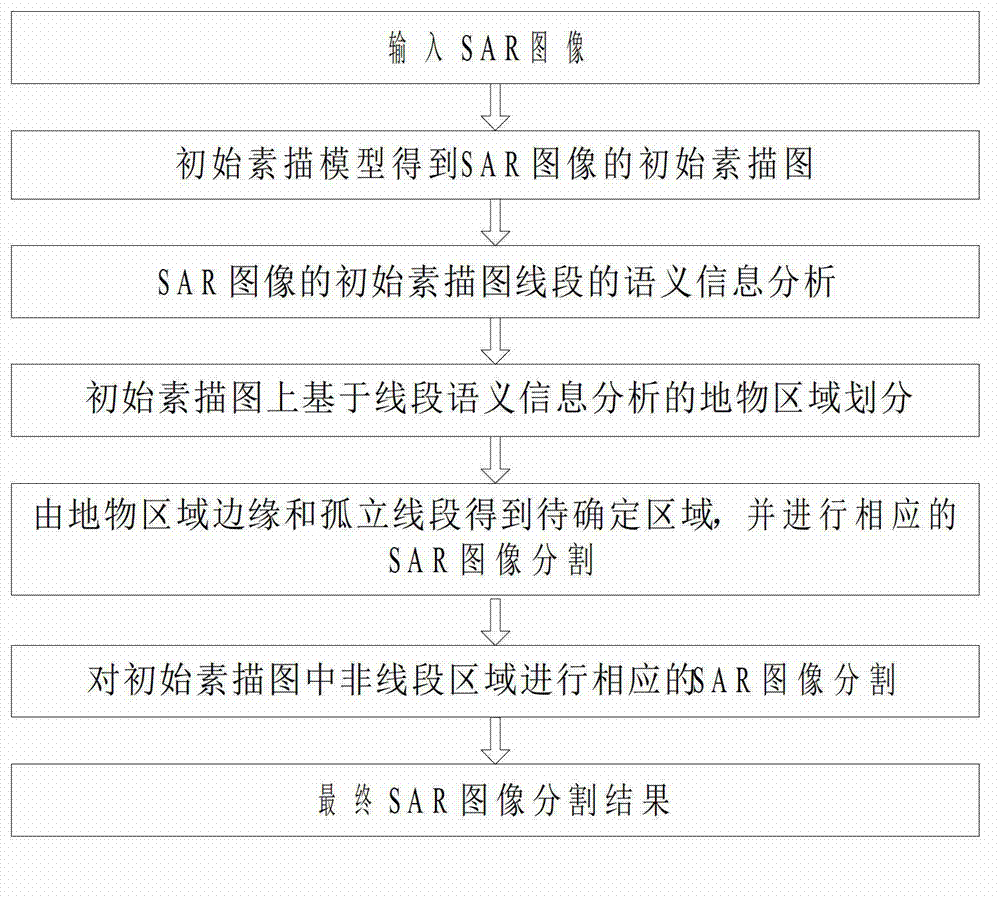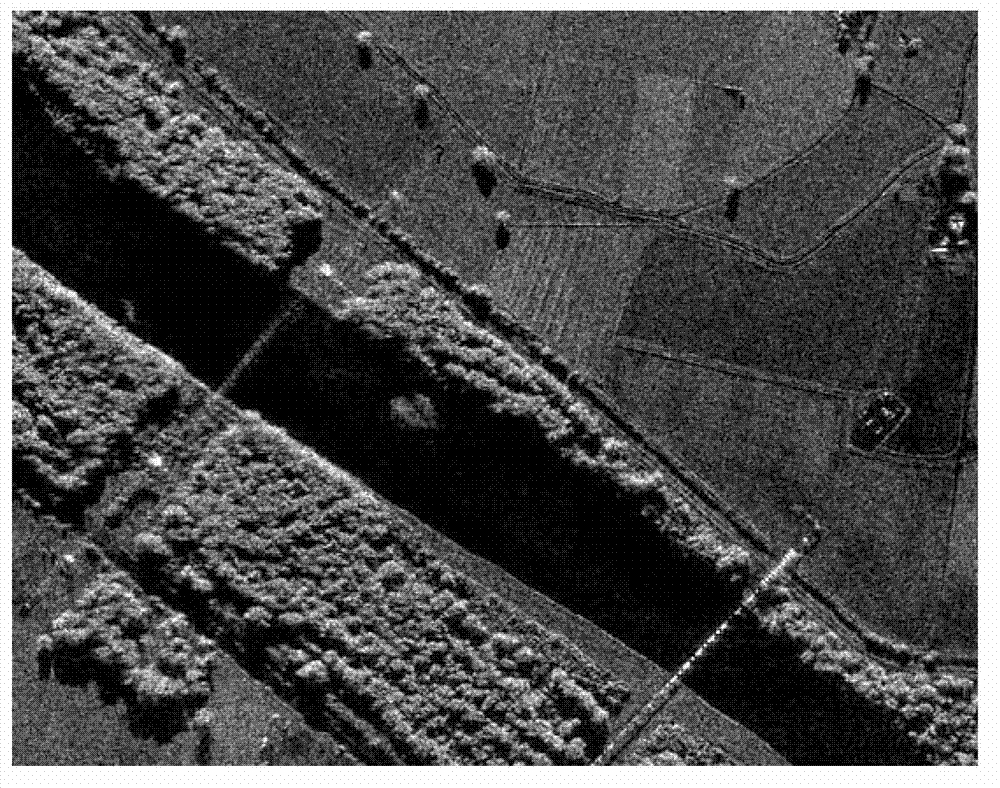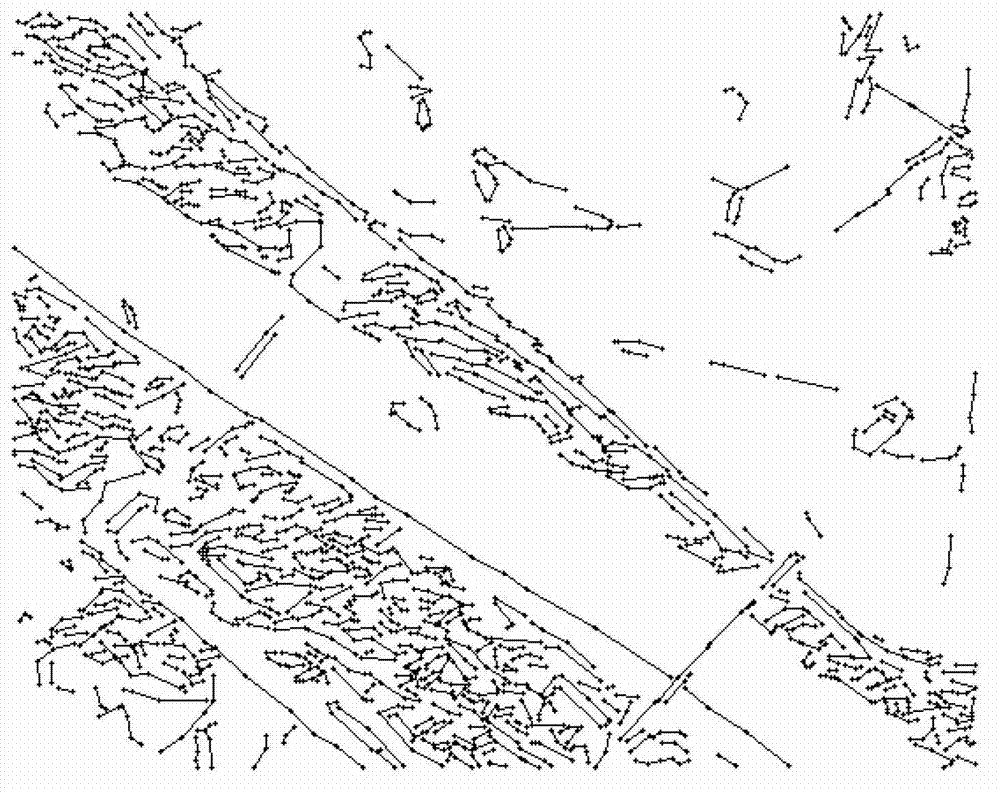SAR image segmentation method based on semantic information classification
An image segmentation and semantic information technology, applied in the field of SAR image processing and interpretation, can solve problems such as lack of consistent connected regions, unsupervised, over-segmentation, etc.
- Summary
- Abstract
- Description
- Claims
- Application Information
AI Technical Summary
Problems solved by technology
Method used
Image
Examples
Embodiment Construction
[0049] The present invention will be further described below in conjunction with the accompanying drawings.
[0050] refer to figure 1 , the specific implementation steps of the present invention are as follows:
[0051] Step 1. Obtain the initial sketch of the SAR image structure information.
[0052] Enter as figure 2 A SAR image shown in Fig. 1 is divided into sketchable parts and non-sketchable parts by using the initial sketch model, which are used to represent the structural information and texture information in the image respectively, and then the sketch tracking algorithm proposed in this paper is used to track the structural information of the image. The sketch part can be extracted and described to obtain the initial sketch, which contains a set of line segments with a single pixel width {S i ,i=1,2,...,n}, such as image 3 As shown, n is the total number of line segments, and the value is 1362;
[0053] For the initial sketch model, see the article "PrimalSke...
PUM
 Login to View More
Login to View More Abstract
Description
Claims
Application Information
 Login to View More
Login to View More - R&D
- Intellectual Property
- Life Sciences
- Materials
- Tech Scout
- Unparalleled Data Quality
- Higher Quality Content
- 60% Fewer Hallucinations
Browse by: Latest US Patents, China's latest patents, Technical Efficacy Thesaurus, Application Domain, Technology Topic, Popular Technical Reports.
© 2025 PatSnap. All rights reserved.Legal|Privacy policy|Modern Slavery Act Transparency Statement|Sitemap|About US| Contact US: help@patsnap.com



